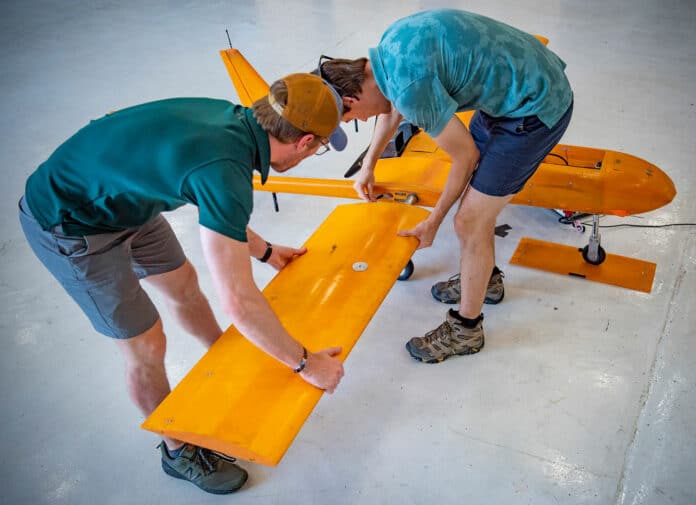US Air Force’s (USAF) Osprey MK III unmanned aerial system (UAS) completed its first autonomous test flight around Duke Field in Eglin Air Force Base on July 20, 2023.
The test was part of a proving ground effort for the USAF’s larger Autonomy, Data, and AI Experimentation (ADAx) program, specifically the USAF’s Autonomy Prime Environment for Experimentation, or APEX, a subset of ADAx.
Work under ADAx also includes the evaluation of magnetic navigation technology, enhanced digital and communications interoperability, autonomous drone airdrops, and other agile processes.
The test was conducted to evaluate and operationalize artificial intelligence and autonomy concepts to support soldiers on the evolving battlefield.
“Our goal with APEX is proving a capability to safely and quickly test novel autonomy and AI on small UAS that is safe enough to be in close proximity to other aircraft,” said Maj. Riley Livermore, ADAx experimentation lead.
The testing was sponsored by AFWERX, while the aircraft was prepared by Air Force Research Lab’s Armament Directorate. The MK III was launched and recovered by the operators of the 416th Flight Test Squadron, while the personnel of the 413th Flight Test Squadron executed the test.
Additionally, the 96th Operations Support Squadron played a significant role in paving the way for APEX testing alongside manned airfield operations.
“We want to prepare the warfighter for the digital future that’s upon us,” said Col. Tucker Hamilton, 96th Operations Group commander and Air Force AI test and operations chief. “This event is about bringing the Eglin enterprise together and moving with urgency to incorporate these concepts in how we test.”
For this test, Osprey MK III aircraft were deployed by human operators, and then they switched control to onboard autonomy and flew the aircraft around designated airspace above Duke Field in Eglin Air Force Base.
During testing, APEX used its watchdog algorithm to ensure the Osprey drone did not violate user-defined airspace boundaries. Whenever the aircraft is close to crossing the border, the watchdog will remove the autonomy and direct the aircraft to a safe remediation point.
In addition, the watchdog feature is also a part of APEX’s Test of Autonomy in Complex Environments (TACE), which screens commands from onboard autonomy before reaching the aircraft’s autopilot. The software can manipulate the autonomous worldview during tests to create more realistic scenarios for testing autonomy without endangering the aircraft.
At the same time, the ADAx team is developing the Viper Experimentation and Next-gen Ops Models (VENOM) project, which involves modifying the Eglin F-16 into airborne testbeds to evaluate increasingly autonomous strike package capabilities.
Additionally, The Project Fast Open X-Platform (FOX) aims to create an open software enclave to install apps onto aircraft without changing the proprietary source code. These apps installed on aircraft will enable numerous mission-enhancing capabilities such as real-time data analysis, threat simulation for training, manned-unmanned teaming, and machine learning.
